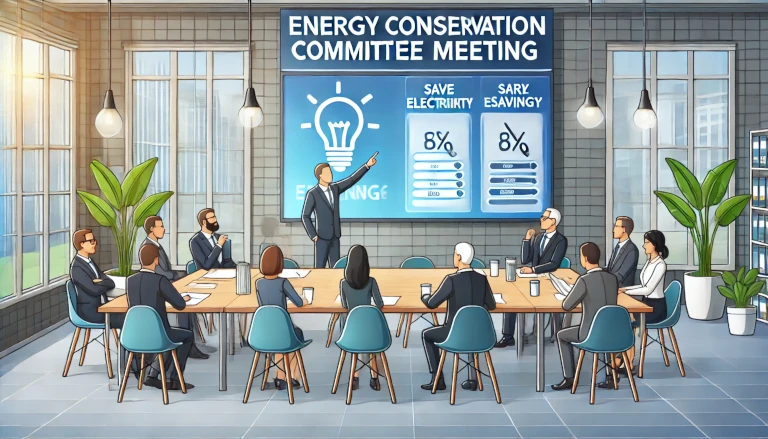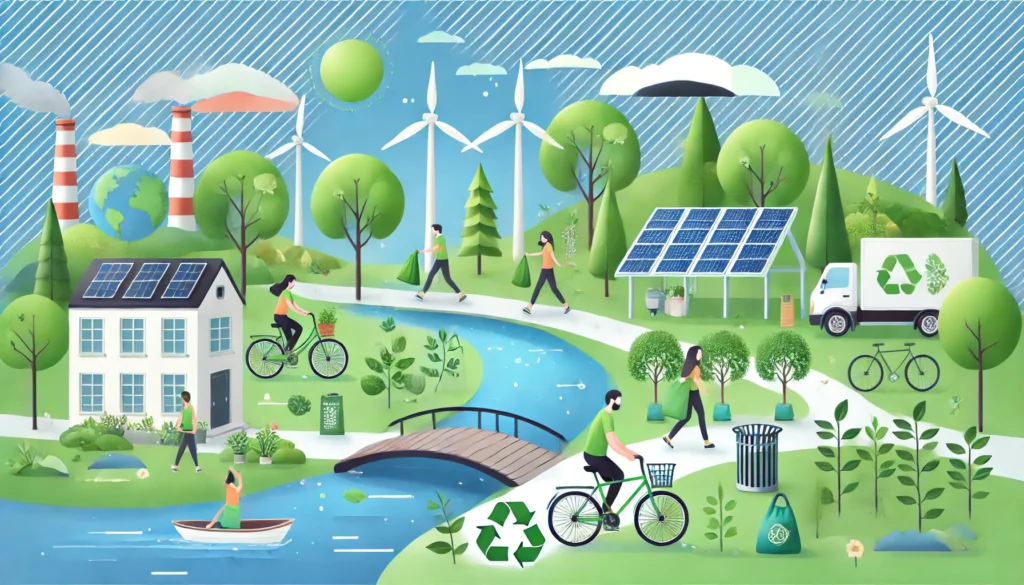As energy conservation becomes increasingly important, many communities and organizations are forming Energy Conservation Committees to promote and manage energy-saving practices. These committees play a vital role in ensuring that communities adopt sustainable habits and reduce their overall energy consumption. By understanding the roles and responsibilities of an Energy Conservation Committee, members can work together effectively to implement and monitor energy-efficient initiatives.
In this blog post, we will outline the essential roles and responsibilities of an Energy Conservation Committee, providing practical examples to help illustrate each task.
Key Roles of an Energy Conservation Committee 🌍
An Energy Conservation Committee serves several crucial roles in guiding a community towards energy efficiency. These roles include planning, implementing, and monitoring energy-saving strategies.
1. Developing Energy Conservation Policies 📜
The committee is responsible for creating energy conservation policies that suit the specific needs of the community or organization. These policies serve as guidelines for efficient energy use and help establish best practices.
- Example: Implementing a policy that mandates turning off lights and appliances when they’re not in use to reduce unnecessary energy consumption.
2. Planning and Executing Energy-Saving Programs 📅
The committee organizes and implements programs that promote energy conservation. This may include initiatives like switching to energy-efficient lighting, installing solar panels, or encouraging the use of energy-saving appliances.
- Tip: Organize a campaign to educate residents about the benefits of switching to LED lighting and other energy-saving measures.
3. Conducting Energy Audits 📊
Regular energy audits are essential to monitor energy consumption and identify areas where improvements can be made. The committee is responsible for conducting these audits and analyzing the data to make informed decisions.
- Example: Perform an annual audit to assess energy usage patterns and highlight areas where energy is being wasted.
4. Educating and Raising Awareness 🧑🏫
One of the most important roles of the committee is to educate the community about the importance of energy conservation. This can be achieved through workshops, newsletters, or events that promote sustainable practices.
- Tip: Host monthly workshops to teach residents about simple ways to save energy at home, such as using smart thermostats.
5. Setting Energy Conservation Goals 🎯
The committee sets measurable energy-saving goals to provide clear targets for the community to work towards. These goals help motivate the community and track progress over time.
- Example: Set a goal to reduce overall energy consumption by 15% within the first year.
Responsibilities of an Energy Conservation Committee 💡
Beyond their roles, the Energy Conservation Committee has specific responsibilities to ensure successful energy management:
1. Monitoring and Reporting on Energy Use 📈
The committee is responsible for monitoring energy usage across the community and providing regular updates. This helps keep everyone informed and accountable.
- Tip: Use smart meters to collect data on energy use and share reports with the community to promote transparency.
2. Ensuring Compliance with Energy Conservation Policies 📋
To encourage compliance, the committee ensures that all residents and members adhere to established energy policies. This may involve addressing violations and guiding residents on how to follow best practices.
- Example: Remind residents to turn off air conditioning units when not needed and encourage the use of fans as an alternative.
3. Maintaining Energy-Saving Infrastructure 🛠️
The committee oversees the maintenance of all energy-saving systems, such as solar panels, energy-efficient lighting, and HVAC systems. This ensures that these systems operate effectively and continue to provide energy savings.
- Tip: Schedule regular inspections to check for issues and ensure that all systems are functioning optimally.
4. Reviewing and Updating Energy Conservation Strategies 🔄
The committee should periodically review and update its strategies to keep up with new technologies and best practices. This ensures that the community’s approach to energy conservation remains effective and relevant.
- Example: Reevaluate energy-saving initiatives every six months to incorporate new technology, such as smart home systems or advanced energy meters.
5. Encouraging Community Participation in Energy-Saving Activities 🌍
The committee fosters community involvement by organizing activities, such as energy-saving challenges, eco-friendly events, and clean-up drives that focus on reducing energy waste.
- Tip: Launch a community-wide “Energy Saver of the Month” program to recognize and reward individuals who go above and beyond in conserving energy.
Example of a Successful Energy Conservation Initiative 🏆
A housing society in Bangalore established an Energy Conservation Committee that successfully reduced its energy consumption by 25% within two years. They achieved this by switching to LED lighting, installing solar panels for common areas, and hosting regular workshops to educate residents about the benefits of energy-efficient appliances.
How to Form an Effective Energy Conservation Committee 🧑🤝🧑
To establish a successful committee, follow these steps:
- Recruit Passionate Members: Look for members who are enthusiastic about energy conservation and have a mix of skills, from technical knowledge to community engagement.
- Define Clear Objectives: Outline the committee’s goals, such as reducing energy consumption by a specific percentage or educating the community on energy-saving practices.
- Assign Roles and Responsibilities: Ensure that each member has a specific role, whether it’s conducting audits, maintaining infrastructure, or leading educational events.
- Develop an Action Plan: Create a detailed plan that includes timelines for implementing energy-saving measures and monitoring progress.
Conclusion: Embracing Energy Conservation as a Community Effort 🔋🌿
The Energy Conservation Committee plays an essential role in promoting sustainable energy practices within a community. By planning initiatives, educating residents, monitoring energy usage, and enforcing policies, this committee helps reduce energy consumption and fosters a culture of sustainability. Forming an Energy Conservation Committee is a proactive step toward creating an eco-friendly and cost-effective living environment for all members of the community.
Discover more from Green Ecosystem - Renewable Energy, Agriculture, and Environmental Sustainability
Subscribe to get the latest posts sent to your email.


